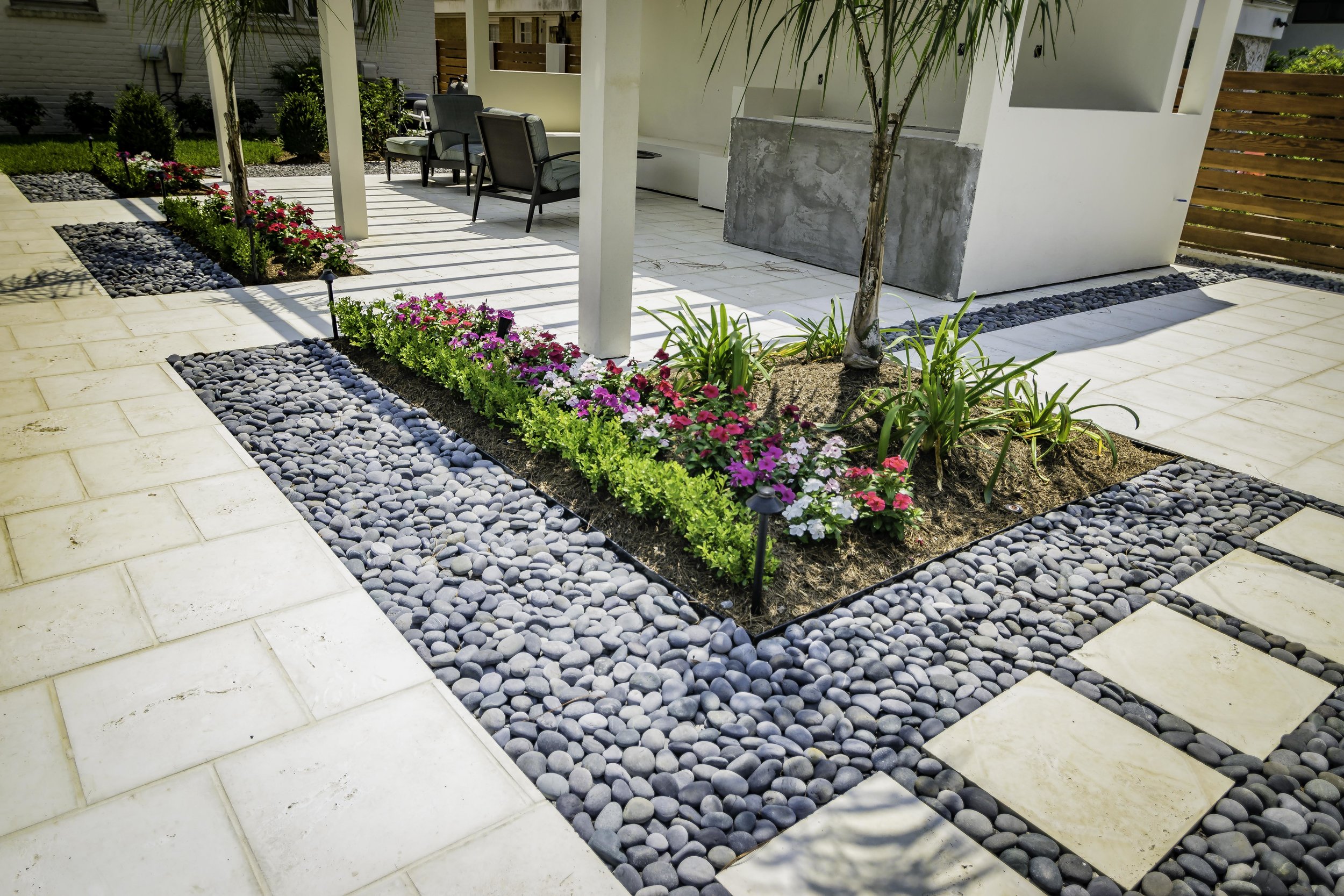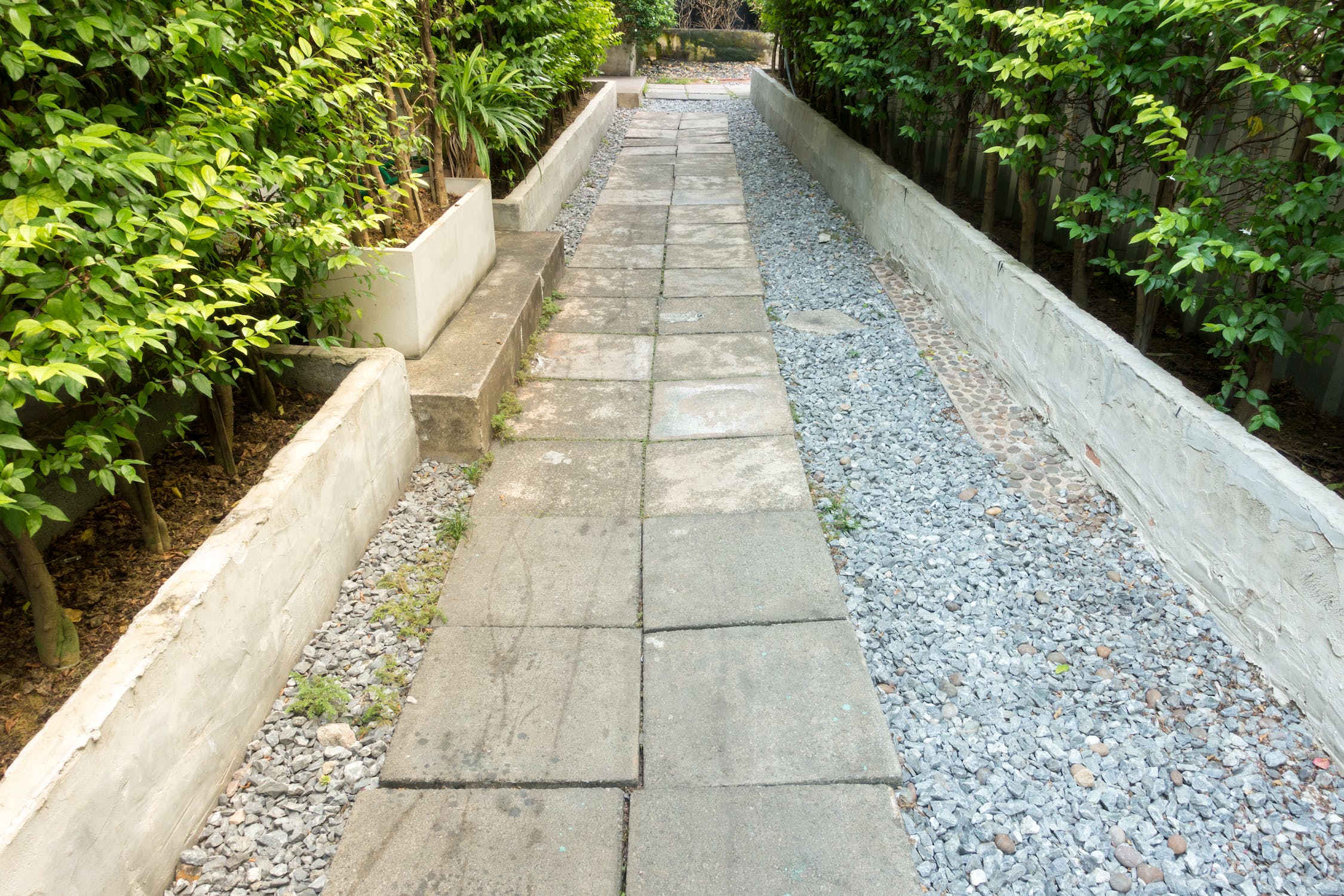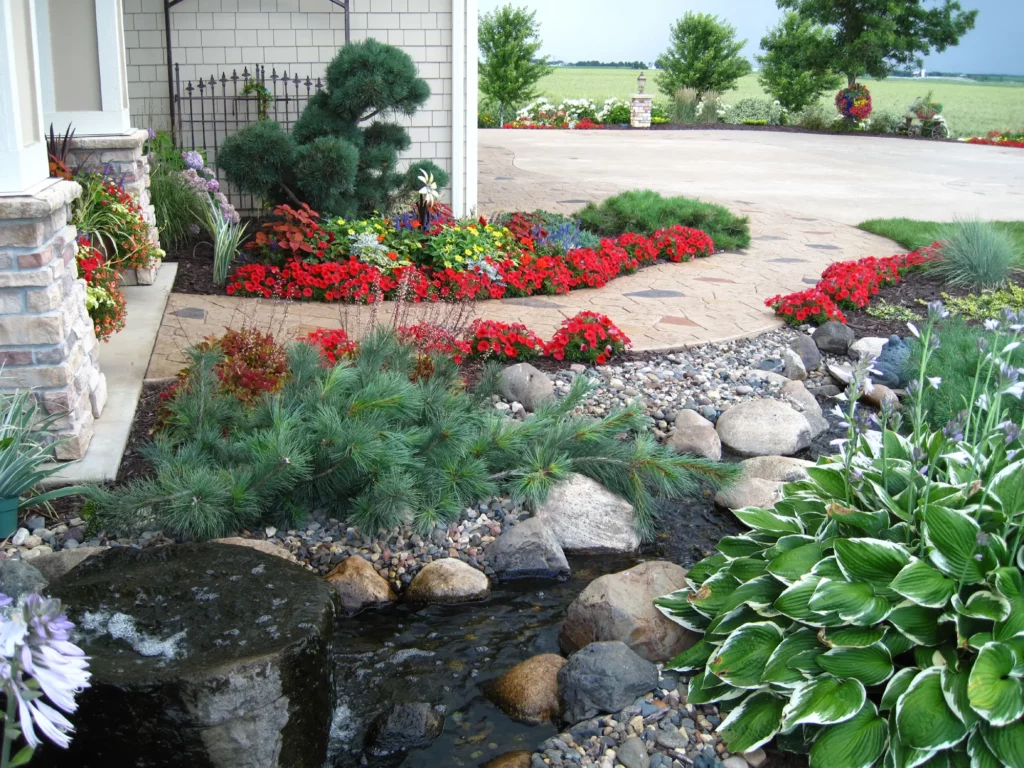Landscaping is an essential aspect of creating visually appealing and functional outdoor spaces. While many people are familiar with softscape elements like plants and trees, hardscaping is equally important. Gravel landscaping offers a versatile and aesthetically pleasing option that can enhance the overall look of your outdoor area.
What is hardscaping?
Hardscaping encompasses the incorporation of non-living elements into landscape design, including various man-made structures and features constructed from materials such as gravel, brick, wood, pavers, or stone. It encompasses any solid structure within an outdoor area distinct from plant life, making it vital tcreateng visually appealing and functional outdoor spaces. On the other hand, softscaping revolves around using organic, living materials like trees, shrubs, and flower beds.
The purpose of hardscaping is to create an outdoor environment that is both visually appealing and functional. Hardscape elements can define spaces, provide seating areas, create pathways, or add focal points to your landscape. They can also help with erosion control, drainage management, and creating outdoor living areas for entertaining or relaxation.
Hardscaping adds structure, definition, and functionality to outdoor areas, complementing the softscape elements. These structures enhance aesthetic appeal, provide practical benefits, and create designated spaces for various activities.
Hardscaping offers several advantages over softscape elements. It requires less maintenance since non-living materials do not require watering, pruning, or fertilizing. Hardscaping also adds value to your property, as well-designed and well-maintained hardscape features can enhance your outdoor space’s overall aesthetic and functionality.

How to Do Gravel Landscaping
Gravel is a popular choice for hardscaping due to its versatility, cost-effectiveness, and low maintenance requirements. Whether you want to create a gravel pathway, a patio, or use gravel as ground cover, incorporating it into your landscape design can add texture and visual interest to your outdoor space.
Here are the steps to guide you in successfully incorporating gravel into your landscape:
Prep the Tools
Before starting your gravel landscaping project, gather the necessary tools and materials. You may need shovels, rakes, wheelbarrows, a tamper or plate compactor, and landscape fabric. Having the right tools on hand is important to ensure efficient and effective installation.
Plan the Location
Decide where to incorporate gravel into your landscape and consider its purpose and functionality. Are you creating a gravel pathway, a patio, or using gravel as ground cover? Take measurements and mark the area’s boundaries to ensure accuracy during installation.
Decide on a Design
Consider the overall design aesthetic you want to achieve with your gravel landscaping. Gravel can create various styles, from minimalist and modern to natural and rustic. Look for inspiration from landscaping websites or consult a professional landscaper to help you choose a design that complements your existing outdoor elements and fits your preferences.
Choose Materials
Selecting the right type of gravel is essential for achieving the desired look and functionality. Gravel comes in various sizes, shapes, and colors. Consider factors such as the texture, drainage requirements, and compatibility with the surrounding elements in your landscape. Common types of gravel used in landscaping include pea gravel, crushed stone, and decomposed granite. Choose the one that best suits your design goals and practical needs.
Before ordering, we recommend using a landscape rock calculator so you only get what you need for your project.
Focus on Maintenance Requirements
While gravel landscaping is generally low maintenance, there are still some considerations to consider. Weeds can sometimes emerge through the gravel, so using landscape fabric beneath the gravel layer can prevent weed growth.
Additionally, regular maintenance will ensure your gravel landscape remains tidy and well-maintained. You may need to rake the gravel to keep it level and visually appealing or remove debris or leaves.

Key Takeaways
Hardscaping involves incorporating non-living elements into your landscape design to add structure, functionality, and visual interest. Gravel is a versatile and attractive option for hardscaping projects. When incorporating gravel into your landscape, remember the following key points:
- Preparing the necessary tools and materials is crucial for a successful gravel landscaping project.
- Planning the location and purpose of the gravel area helps determine the best design and installation approach.
- Choosing a design that complements your outdoor space and personal preferences is essential for achieving the desired aesthetic.
- Selecting the right type of gravel based on size, shape, color, and compatibility with your landscape elements ensures a cohesive and visually appealing result.
- Paying attention to maintenance requirements, such as using landscape fabric to prevent weed growth and regular upkeep, helps keep your gravel landscape looking its best.
With these steps, you can successfully integrate gravel into your landscape design, adding visual interest and functionality to your outdoor space.






